Rose Petals Party Vol. 2
A fistful of rosé wines.
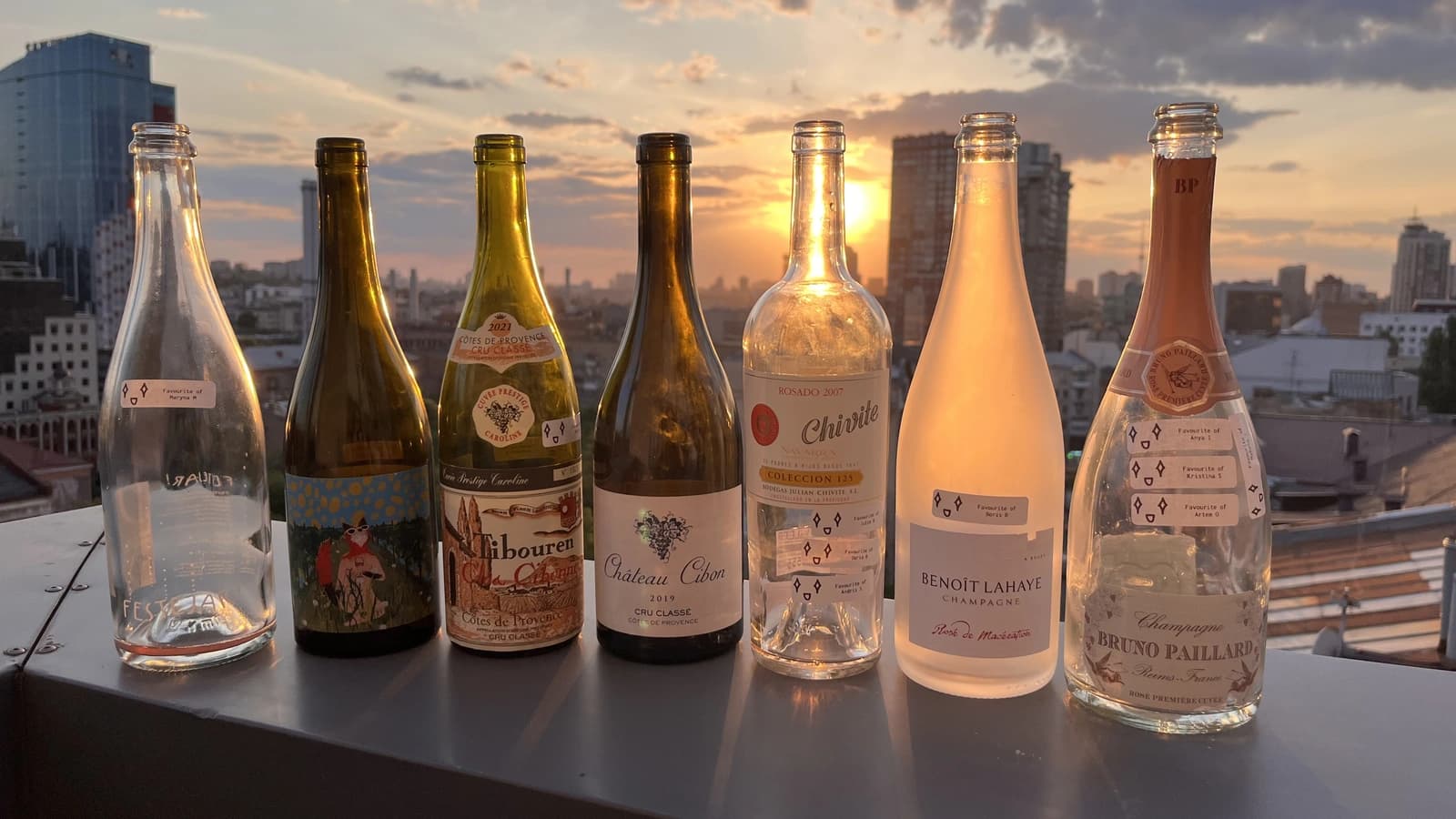
Usually, people tend to prefer either red or white wines. Some are firm in their preference, while others are open to all colours of the wine world. And indeed, the spectrum is a bit wider as there are orange wines (some consider them white) and rose wines. For some reason, the latter colour type is often neglected as a non-serious and overall vulgar style capable only of being a pool refreshment. I see no shame in enjoying these drinks, yet luckily for our events, there is a plethora of interesting rose wines. Let's discover some of them.
Rosé winemaking
To make things clear, let's quickly cover the technical aspect of rosé winemaking. On a high level, there are only two methods to make this type of wine - limited maceration, direct pressing and blending.
The 'red' colour in wine usually (with a few notable exceptions) comes from grape skins. The longer you keep the juice on the skin, the darker the wine becomes. Makes sense? I hope so. The core idea of the maceration method is to limit this contact to 2-48 hours, depending on the grape variety (some are darker than others and require less time).
There is also the Saignée (bleed) method, where you simply bleed off part of the juice during the first hours of maceration of red wine. It gives you a small batch of material for rosé wine and makes the primary batch for red wine more concentrated. While it's cost-effective, this method is less preferred by some winemakers as farming methods for red and rose wines are different.
The direct pressing method is used for very light rosé wines as the colour is extracted during fruit pressing from the skins.
And the last method is blending. While it sounds like the most logical (you simply mix white and red wine), it's prohibited by most European appellations. If you blend, you have to put a 'table wine' designation on your label. However, in Champagne, blending is allowed and is the most used method.
Patrick Bouju Festejar! Rosé 2022
- Region
- France » Vin de France
- Type
- rose ancestral sparkling, brut nature
- Producer
- Wine
- Vintage
- 2022
- Grapes
- Gamay, Merlot, Pinot Noir
- Alcohol
- 11.5
- Sugar
- 1.3
- Volume
- 750 mL
- Find at
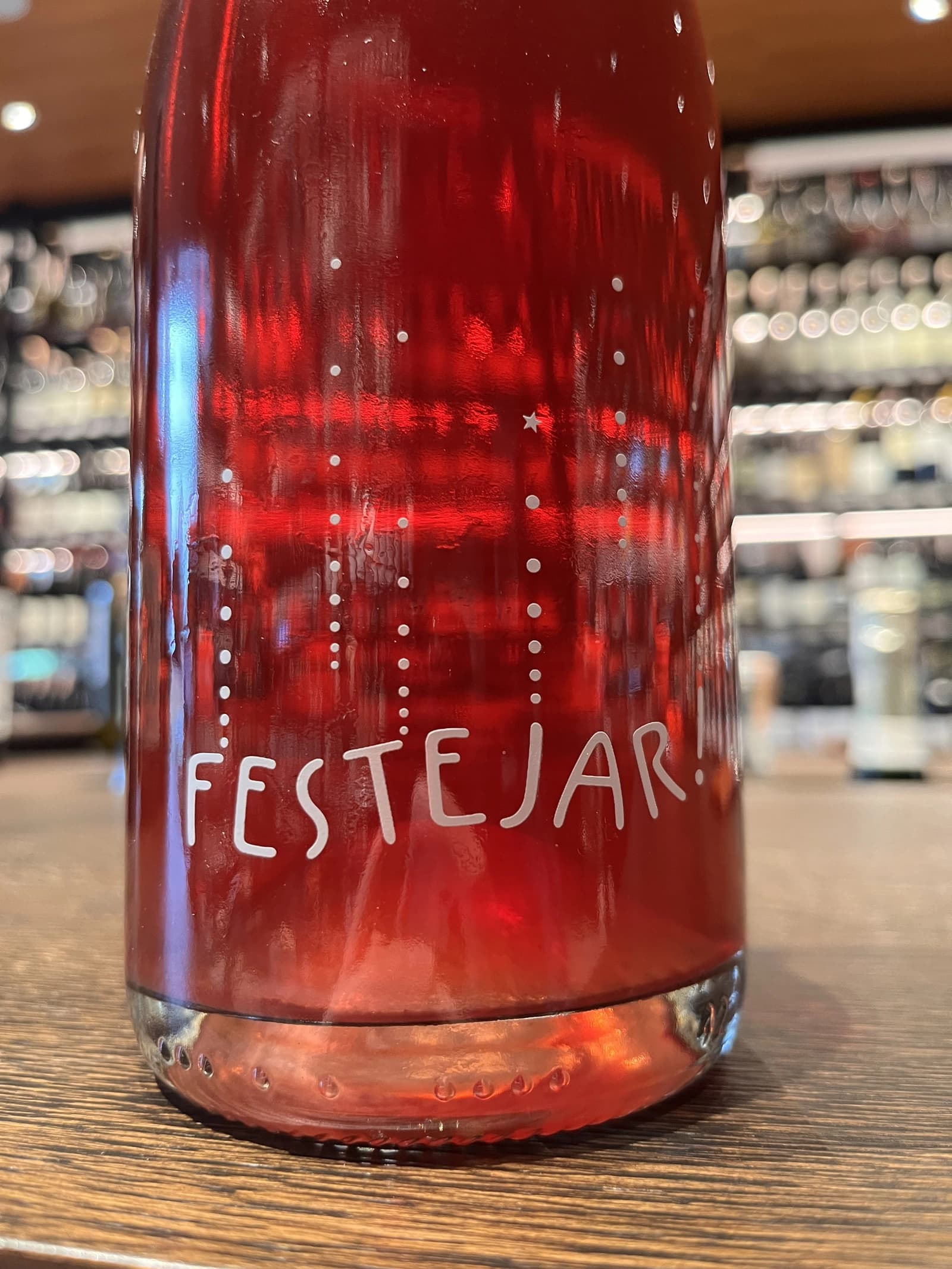
This wine secured the 🏅 6th place in our wine tasting lineup.
Most of you should be already familiar with the legend of the natural wine movement from Auvergne. A former computer scientist (?), Patrick Bouju decided to throw the keyboard into oblivion (no connection with TES4) and replace it with farming equipment in 2003.
Domaine de La Bohème is his winery in Auvergne, located at an average altitude of 500 meters, spread over the best terroirs around his home that he could find: Egliseneuve-près-Billom, Billom, Lempdes, le Puy d’Anzelle, Corent. He cultivates old Gamay grape varieties from Auvergne (Gamay de Bouze, Gamay Fréau, Milefleurien). With an average age of a hundred years (some are pre-phylloxera), the roots draw deeply from the soil (basalt, limestone, clay, pozzolan) to give the wines of Domaine de la Bohème a unique character. To highlight the specificity of each terroir, Patrick vinifies his parcels separately.
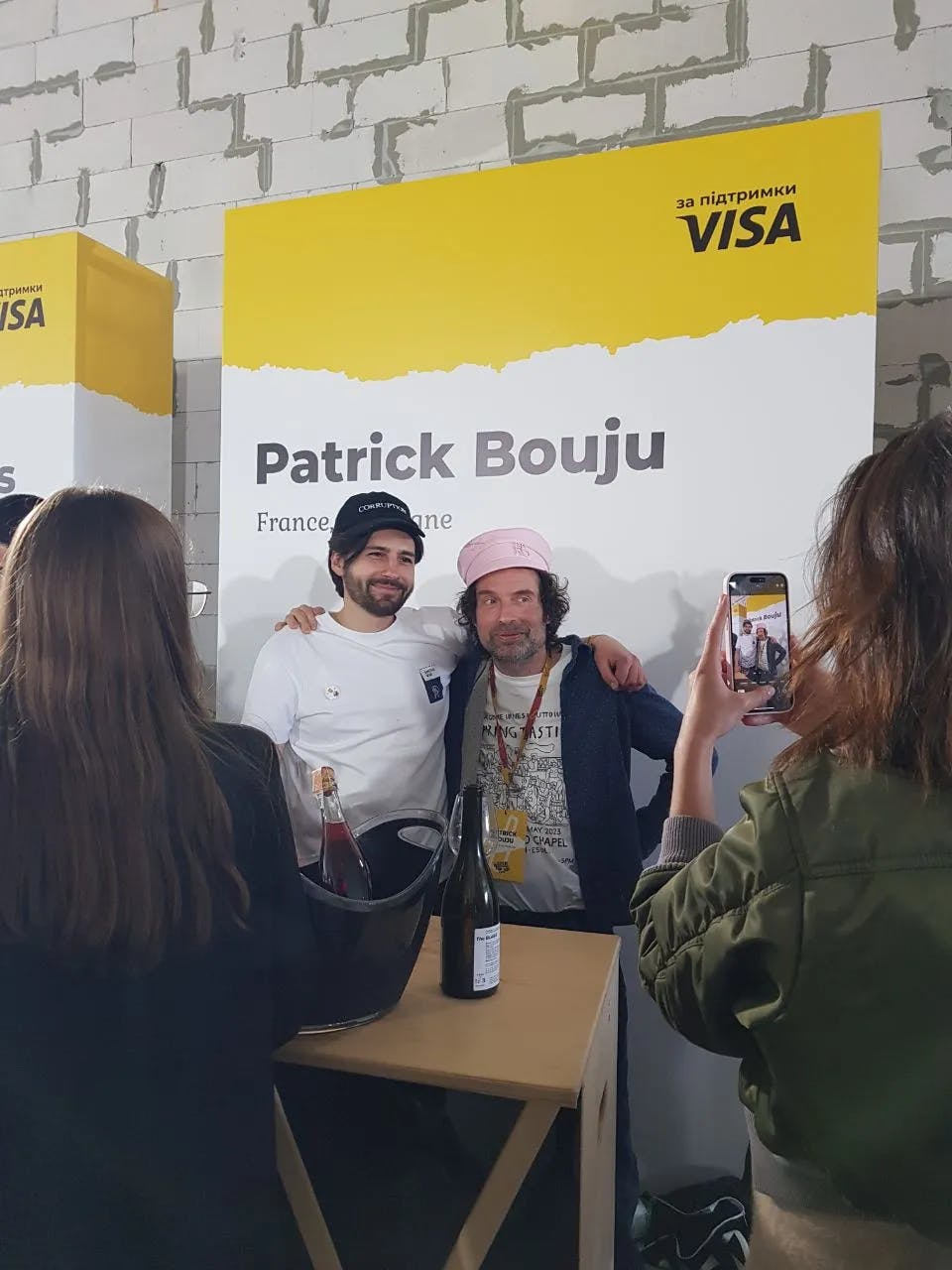
Patrick Bouju allows himself a little copper and sulfur and uses plant preparations (nettle, horsetail, comfrey, etc.) to prevent possible diseases. In the cellar, he uses no chemicals. There is no usage of during vinification or bottling.
Festejar means party in Spanish. Pet Nat means bubbles and freshness. Gamay means fruitness. 11.5% abv means ease of drinking. Perfect aperitif.
Alex Craighead Kindeli Verano 2021
- Region
- New Zealand » Nelson
- Type
- rose still, dry
- Producer
- Wine
- Vintage
- 2021
- Grapes
- Riesling, Syrah, Sauvignon Blanc, Chardonnay, Gewürztraminer, Pinot Grigio, Pinot Noir
- Alcohol
- 12.5
- Sugar
- 1
- Volume
- 750 mL
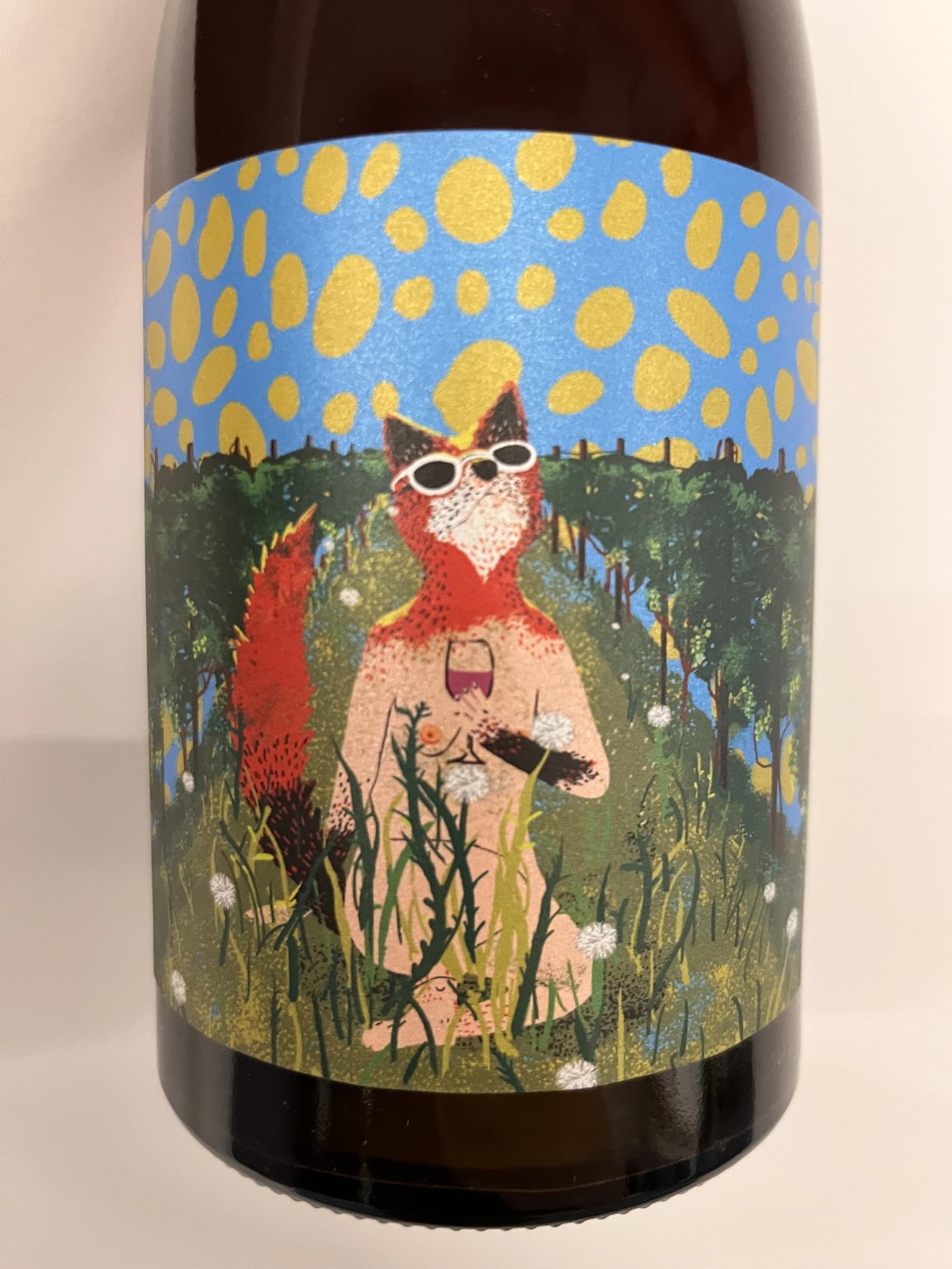
This wine secured the 🏅 7th place in our wine tasting lineup.
Kindeli wines are the product of Alex Craighead and Josefina Venturino. Alex, born in Australia and raised in New Zealand, studied wine and soon after began to travel the world to gain experience from other winemakers in various regions. That's how he met Josefina, a landscape architect from Argentina. Eventually, they moved to New Zealand.
From day zero, they were experimenting with low intervention winemaking. In 2014 they released their first wines in Martinborough. In 2016 they moved to Nelson, where they bought an existing organic winery and vineyard. In other words, they moved from the southern part of the Northern Island to the northern part of the Southern Island. Are you confused? You shouldn't be.
On 4.5 hectares of clay soils in Upper Moutere, Alex and Josefina cultivate 14 various varieties. In addition, they lease another three vineyards totalling another 9.5 hectares.
Alex went a little crazy with this cuvée; he wanted to mix every single grape he grows to get a wine that would represent a complete image of the terroir he works with. On this wine every fermentation technique has been used: carbonic, destemmed, whole cluster, and so on. The refinement took place in stainless steel tanks, oak barrels and amphora. The wine was bottled without clarification, filtration or added .
Clos Cibonne Cuvée Prestige Caroline Tibouren Rosé Cru Classé 2021
- Region
- France » Provence » Côtes de Provence AOC
- Type
- rose still, dry
- Producer
- Vintage
- 2021
- Grapes
- Tibouren, Grenache, Syrah
- Alcohol
- 13.5
- Sugar
- 1.5
- Volume
- 750 mL

This wine secured the 🥉 3rd place in our wine tasting lineup.
Clos Cibonne draws its name from Jean-Baptiste de Cibon, captain of Louis XVI's Royal Navy and the first owner of the vineyard. After he died in 1797, the property was sold to the Roux family.
In the 1930s, André Roux took over the winery and brought it to a new level. Thanks to Adnré Roux, Clos Cibonne acquired the status of Crus Classés Côtes de Provence when the classification was established in 1955. Aside from the official merits, Adnré Roux is also responsible for the focus on Tibouren. It is safe to say that, without him and his passion, this old grape variety would have disappeared.
Cuvée Prestige Caroline Tibouren Rosé Cru Classé is a bled of Tibouren (85%), Grenache (10%) and Syrah (5%). Grapes are direct-pressed into stainless steel vats and refrigerated to slow down the beginning of the fermentation. As soon as the fermentation begins, the musts are put in casks where the fermentation will last a short week. The wine is stirred on a daily basis with temperature control to guarantee the best aroma extraction until the beginning of winter. Then the wine ages in casks of 300 liters for eight to ten months.
Clos Cibonne Château Cibon Cuvée Hommage à Marius Rosé Tibouren Prestige Cru Classé 2019
- Region
- France » Provence » Côtes de Provence AOC
- Type
- rose still, dry
- Producer
- Vintage
- 2019
- Grapes
- Tibouren, Grenache
- Alcohol
- 14
- Sugar
- 1.8
- Volume
- 750 mL

This wine secured the 🏅 4th place in our wine tasting lineup.
Art is often dedicated to a memory of someone dear or respected. Wine is art, so no wonder the family behind Clos Cibonne made a tribute to Marius Roux in the form of Cuvée Hommage à Marius Rosé. It's a blend of Tibouren (90%) and Grenache (10%) from plots on a hillside of the Chaine des Maures. The Tibouren vines are over 60 years old on average.
The grapes are harvested with a slight over-ripeness and destemmed before vinification. Direct pressing into new casks of 26 hL, equipped to cool the juice and thus allow a slow and progressive fermentation. These wines remain for 24 months in casks and are stirred regularly. The lees are kept only for 6 to 12 months.
Chivite Coleccion 125 Rosado 2007
- Region
- Spain » Navarra » Navarra DO
- Type
- rose still, dry
- Producer
- Vintage
- 2007
- Grapes
- Tempranillo, Merlot, Cabernet Sauvignon
- Alcohol
- 13.5
- Sugar
- 2.1
- Volume
- 750 mL
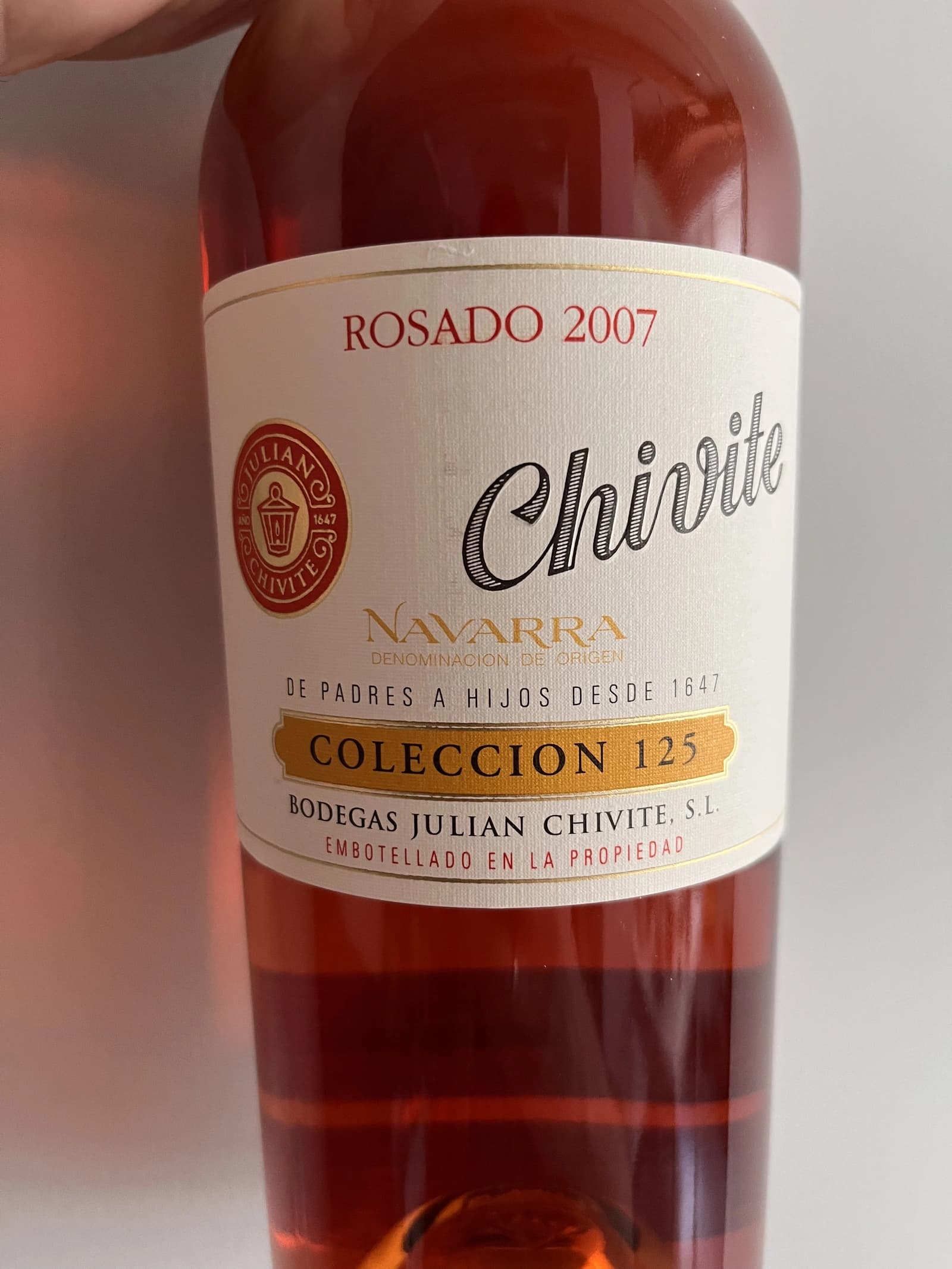
This wine secured the 🥇 1st place in our wine tasting lineup.
Colección 125 Rosado is a barrel-fermented rosé for cellar ageing. It comes from a selection of plots of Garnacha and Tempranillo (it seems that older vintages used Tempranillo, Merlot and Cabernet Sauvignon) from the Legardeta Estate.
The grapes are harvested by hand and placed into 200-kg crates. The idea is to get them intact to the winery for sorting. After a short maceration in vats, the must is bled using the traditional saignée method to obtain the best quality free run must. The juice is transferred into 225-litre French oak barrels, where it ferments and ages on its lees for 9 to 12 months.
Oh my. This is a 16-year-old rosé. And it's more than alive.
Benoît Lahaye Rosé de Macération a Bouzy (d2022) NV
- Region
- France » Champagne » Champagne AOC » Montagne de Reims » Grande Montagne Reims » Bouzy
- Type
- rose traditional sparkling, extra brut
- Producer
- Vintage
- NV
- Disgorged
- 2022-09
- On lees
- N/A
- Grapes
- Pinot Noir
- Alcohol
- 12
- Sugar
- 3
- Volume
- 750 mL
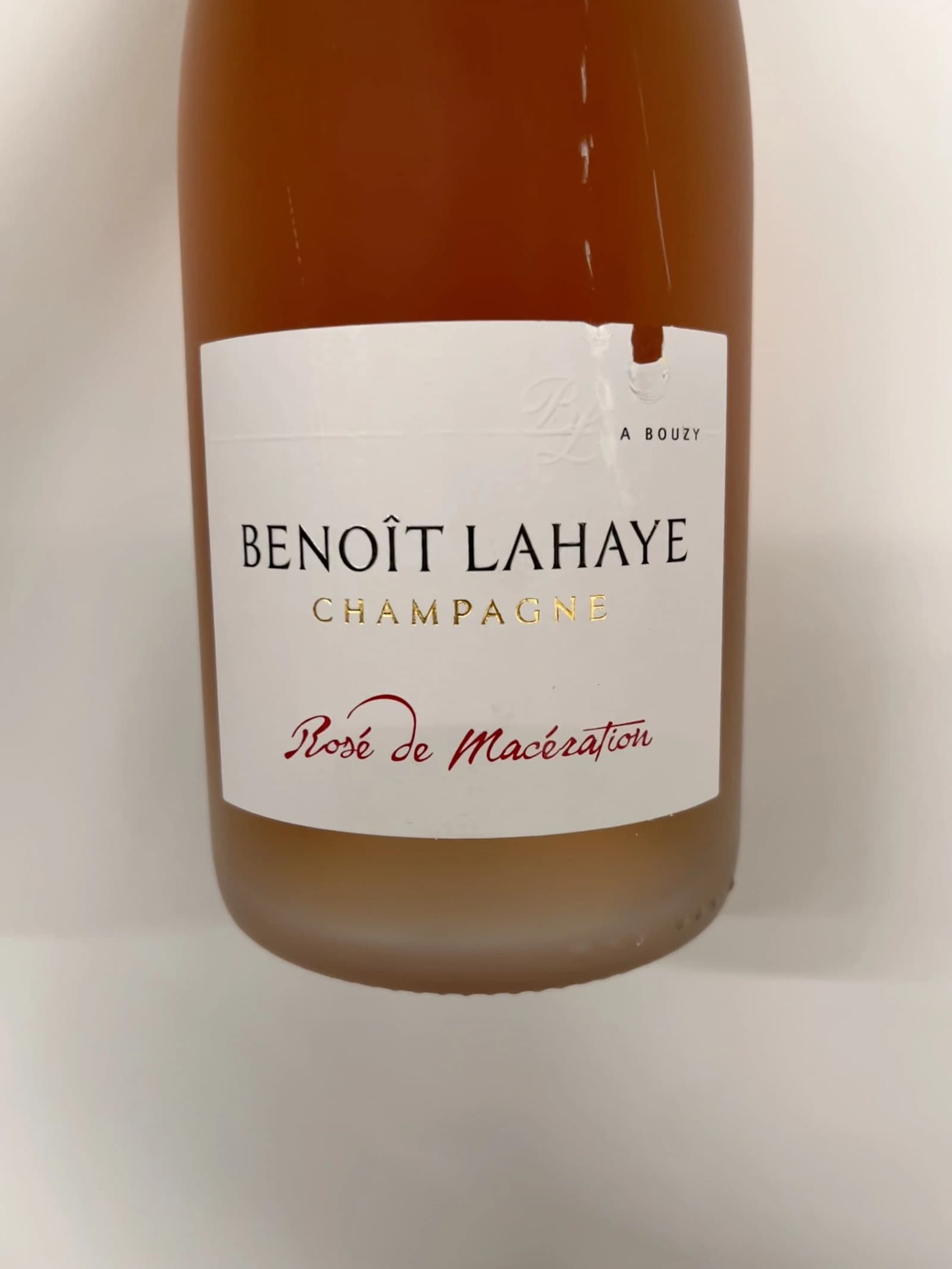
This wine secured the 🏅 5th place in our wine tasting lineup.
Benoît Lahaye is among those few daring growers that practice certified biodynamic farming in a Champagne erratic climate. After taking responsibility for the family estate in 1993, Benoît systematically moved towards organic (certified in 2007) and biodynamic practices (certified in 2010). His Burgundy horse, named Tamise, helped him on this road (no pun intended). You can see them together in many photos online.
Today (at least in 2021) Benoît Lahaye owns 4.8 hectares, which are planted to 88% pinot noir: three hectares are located in the pinot noir epicentre of Bouzy; one - in Ambonnay; and tiny parcels in Tauxières-Mutry and Vertus.
Since 2012, all base wines are fermented in 205-litre barriques of between new and 15 years old. Interestingly, Benoît emphasises that his style is not oxidative, preferring to leave oxidative development to occur in the bottle. He also experiments with small tanks, egg fermenters and Tuscan amphorae. Only indigenous yeast is used for fermentation. Full malolactic fermentation is used since 2008 to enhance complexity and permit the reduction of .
Rosé de Macération is 100% Pinot Noir from Les Juliennes, a vineyard located on the terres blanches (white soils) in Bouzy on the border with Tauxières, planted in 1973. Whole cluster maceration for 2 to 3 days, then direct pressing of the grapes. The still wine is racked once and not filtered before its secondary fermentation. Low dosage at 3 grams/litre (extra brut).
Bruno Paillard Rosé Première Cuvée (d2019) NV
- Region
- France » Champagne » Champagne AOC
- Type
- rose traditional sparkling, extra brut
- Producer
- Vintage
- NV, based on 2015
- Disgorged
- 2019-12
- On lees
- 36 months
- Grapes
- Pinot Noir, Chardonnay
- Alcohol
- 12.5
- Sugar
- 6.3
- Volume
- 750 mL
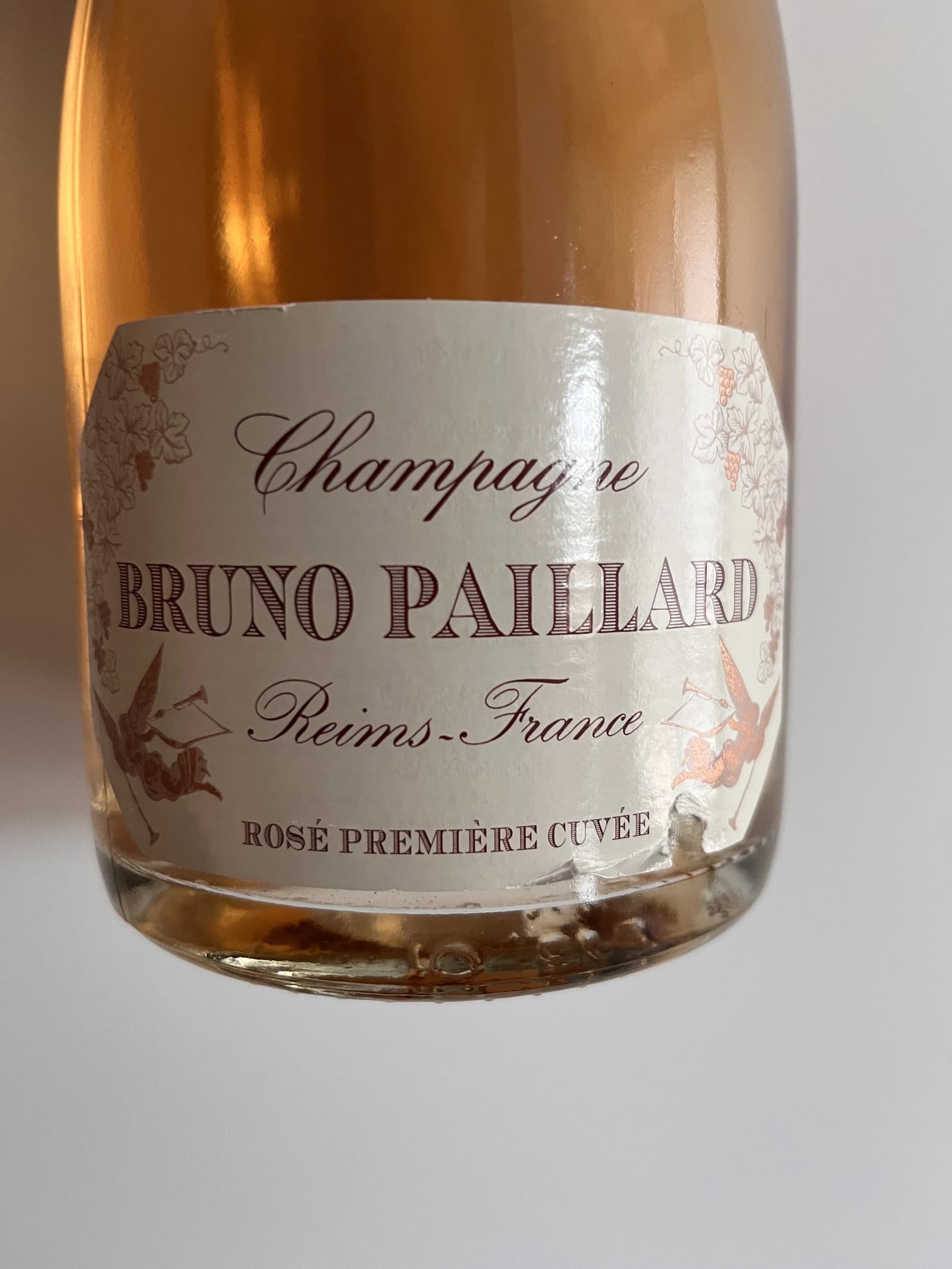
This wine secured the 🥈 2nd place in our wine tasting lineup.
This year we had a chance to focus on white Première Cuvée by Bruno Paillard, specifically thanks to Collection Anciens Dégorgements. You can find more information about the producer on that page. To avoid repetition let's focus on the Rosé Première Cuvée. In contrast to Benoît Lahaye Rosé de Macération a Bouzy, this one is made using the blending method.
Part of the Pinot Noir is vinified as white wine, while the other is made as red with prolonged maceration. The amount of Chardonnay is kept secret. The blend is composed of reserve wines - 25 vintages, going back to 1985. Three years on the lees, then a minimum of a further five months after disgorgement. Extra-Brut, very low dosage, less than 6g/l.
Luckily, I've got my hands on a bottle that was disgorged in December 2019. The freshest release you can find on the shelves was disgorged in 2022.
Raw scores
Resources
- Puckette, M. (n.d.). What Is Rosé: Quick Guide To Pink Wine | Wine Folly. Wine Folly.
- Robinson, J., & Harding, J. (2015). The Oxford Companion to Wine. American Chemical Society.
- Champagne Bruno Paillard
- Stelzer, T. (2019). The Champagne Guide 2020-2021.
- Chivite
- Benoît Lahaye on Charles Neal Selections